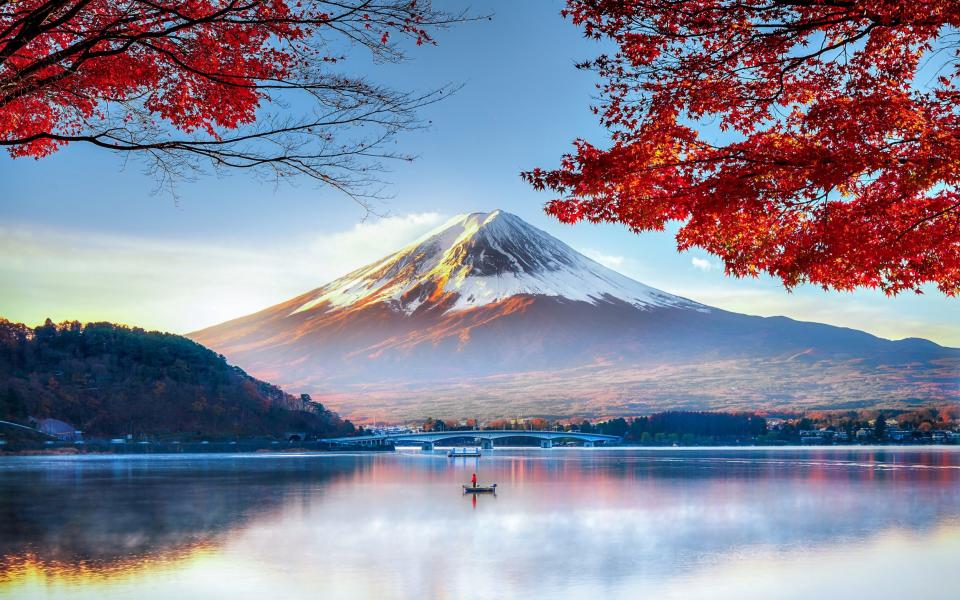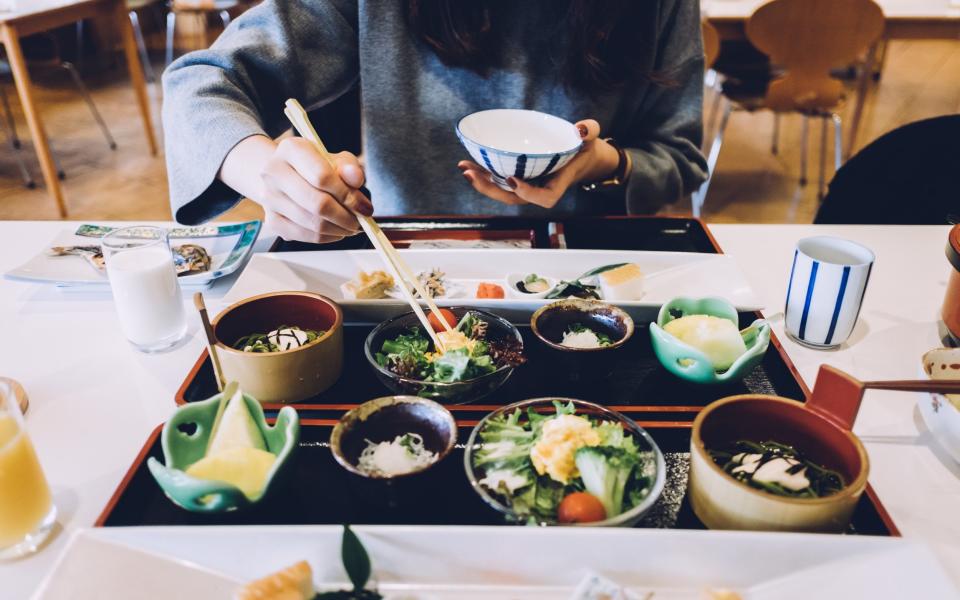All the ways Japan is trying to stop you from visiting

The falling yen has helped create a tourism boom in Japan. Some 33 million visitors are expected this year, a new record – and up one million on pre-pandemic levels. But not everyone is celebrating.
Back in April, the small town of Fujikawaguchiko made headlines when it took a drastic step against “overtourism”, installing an obstructive black screen to block a favoured viewpoint (and selfie spot) of Mount Fuji. Now the trend appears to be catching on, with a range of new restrictions in Tokyo, Kyoto and elsewhere.
“These restrictions are in response to very real issues,” says Rebecca Hallett, a Japan specialist who has visited the country more than a dozen times. The Japanese remain welcoming to tourists in general, she says, but are losing patience with bad behaviour among a sizable minority.
Here are some of the new rules in place:
Luggage fees on trains – £5 per bag
Lugging your suitcases onto a train feels like an inevitable part of travel. Yet Japan’s cheap courier services mean that locals prefer to send their luggage ahead. As a result, they don’t take kindly to unwieldy suitcases blocking aisles or taking up seats on busy commuter trains
Earlier this year, the Shinkansen railway network introduced an additional fee for anyone carrying a bag longer or taller than 160 cm. Expect to pay ¥1,000 (£5) per bag.
No access to Geisha streets – £50 fines

The famous Kyoto district of Gion, home to the geisha teahouses, is a must-see for tourists. Yet in recent years, visitors have been exhibiting increasingly bad behaviour, including harassing geisha to get the perfect souvenir photo.
In response, Kyoto has now banned tourists from the historic private alleyways between the teahouses. Anyone taking a photo of a geisha without her consent risks being fined ¥10,000 (£50).
Locals-only dining nights – and discounts for Japanese
Japan ranks among the world’s greatest culinary destinations. Yet some establishments are looking to protect their regulars against the influx of internationals. One Hiroshima okonomiyaki restaurant has barred tourists on Friday evenings, reserving its tables for residents only.
Others are taking a craftier approach. In Tokyo’s Shibuya district, smallprint on the menu (written in Japanese) explains that all locals will receive a ¥1,000 (£5) discount on their total bill.
Tourist-only bus routes
Clean and efficient public transport is a point of pride for Japan. But a surge in tourists means that some busy services are running slower than usual. In response, Kyoto has created tourist-only buses, taking you straight to the popular landmarks without irritating commuters.
Reminders about Japanese manners – and no loitering
Japan is regarded as a country of immaculate manners and novel customs. But how many tourists take a quick refresher course before heading there? Fed up with persistent violations – which may or may not coincide with a 50 per cent jump in American visitors – Kyoto has launched a new poster campaign.
A new “Mind Your Manners” campaign will remind English-speaking visitors of local customs. It includes basic stuff like not littering or yelling, but also an encouragement not to loiter in large numbers (a tricky one for group trips).
Limits on Mount Fuji – plus £10 fees

Like other world-famous attractions, Mt. Fuji gets a little crowded at times. As of this summer, authorities have capped visitors at 4,000 per day, as well as bringing in new fees (¥2,000 / £10) for those taking the popular Yoshida Trail. Other hotspots are taking a similar approach: Tokyo’s Studio Ghibli museum now limits daily visitors to 3,500 during the week and 4,000 on weekends.
No tourists on speediest trains
Tourists love the Japan Rail Pass, which offers unlimited usage of the Shinkansen rail network for a limited time. But you should be aware that the rail pass doesn’t cover all services – namely the speedier Nozomi and Mizuho services. While these routes are only a few minutes faster, they rely on locals boarding and disembarking in a matter of seconds – and thus don’t have time to wait for clueless tourists.
Tourists pay extra – up to four times more
Although commonplace in other Asian countries, the idea of charging foreigners more remains taboo in Japan. But is the tide turning?
This month, it was reported that the ancient Himeji Castle may soon be charging a quadruple entry fee (¥4,000 / £20) for non-nationals. The local mayor defended the extra costs by saying that locals already pay towards its upkeep through their taxes.
Higher tourist taxes – up to £9.80 a night
Like their European counterparts, Japanese cities have been increasing the daily fees paid by tourists – although the sums aren’t exactly eye-watering.
Anyone staying overnight in Kyoto will now pay a daily tourism levy on their hotel room, ranging from ¥200–1,000 a night (£1-£5). The northern island of Hokkaido, known for its ski resorts, now charges every guest an extra ¥2,000 (£9.80) per night.

Sending visitors elsewhere
Don’t worry; Japan isn’t looking to redirect tourists to Timbuktu. But the government does want visitors to spread out beyond the crowded hotspots (according to official figures, 72 per cent of foreign tourists stay within Tokyo, Osaka, and Nagoya).
The country is currently promoting 11 lesser-visited destinations, including the samurai heartland of Hokuriku and the Alps of Nagano.
“I had an amazing time in Shimane a couple of years ago – watching kagura performances, visiting Japan’s oldest shrine, and drinking sake where it was invented,” says Japan expert Rebecca Hallett. Even better, just 0.1 per cent of overseas tourists currently go there.
But luxury travellers are welcome…
While boisterous influencers are a no-no, another class of travellers can expect the red carpet treatment – perhaps quite literally. Japan’s tourism authorities are currently focusing on maximising the number of “luxury tourists”, defined as those who spend more than ¥1 million (around £5,000). Good news if you’re one of them.




